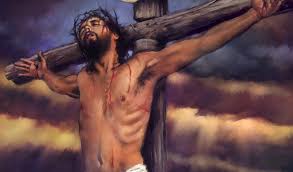
“Packs of dogs close me in, and gangs of evildoers circle around me; they pierce my hands and my feet; I can count all my bones.” (Psalm 22:16 The Book of Common Prayer, p.611).
There are many ways of looking at the Passion and Death of Jesus on the Cross. They are each unique and have something to contribute to the whole. Jesus’ death was a terrible event. It was ugly. It was bloody. In Jesus’ betrayal, trial, and crucifixion is the experience of every form of human suffering that can be imagined or experienced. Christ’s Death on the Cross is the confirmation of our faith that God is with us in whatever is happening to us. God’s extravagant love is poured out for all humankind in this amazing act of obedience.
The Contemplative looks upon the wounds of Jesus on this Good Friday and sees in them a way into the depth of God’s loving goodness. The cry of anguish, helplessness and a willingness to accept where God had Jesus in what was so vicious and cruel. Yet, love for His Father and all of us was Jesus’ sole objective. St. Julian of Norwich wrote in A Song of True Motherhood “Even when all was completed and he carried us so for joy, still all of this could not satisfy the power of his wonderful love.” (Canticle R. Enriching Our Worship 1, p. 40). The very reality that all of humankind has many many problems are mysteriously represented and accepted by God, as Jesus hangs on the Cross between eternity and time with His arms outstretched; is God’s arms of love ever ready to embrace all of us.
When we open ourselves to experience the love of Christ on the Cross within our wounds we discover what Abba Pambo said, “If you have a heart, you can be saved.” Christine Valters Paintner in her book Desert Fathers and Mothers: Early Christian Wisdom Sayings Annotated and Explained writes, “The desert elders saw the heart as the center of our being where we encounter God most intimately” (See pages 26-27). As Contemplatives, we can always meditate on the wounds of Jesus, our wounds and those of humankind from our interior selves. When we surrender in obedience to the grace of God through Jesus Christ; the transformation of our own lives and those of the world around us becomes possible so long as we get ourselves out of the way.
“Brothers, now that we have asked the Lord who will dwell in his tent, we have heard the instruction for dwelling in it, but only if we fulfill the obligations of those who live there. We must , then, prepare our hearts and bodies for the battle of holy obedience to his instructions. What is not possible to us by nature, let us ask the Lord to supply by the help of his grace” (RB 1980: The Rule of Saint Benedict in English, The Prologue, p.18).
How do you see the wounds of your life in the light of the wounds of Christ on the Cross?
Amen.
Brother Anselm Philip King-Lowe, OSB
If you feel led to buy me some coffee, please scroll to the bottom of the right sidebar and click on the Benedictine Coffee Mug. Thank you so much.
